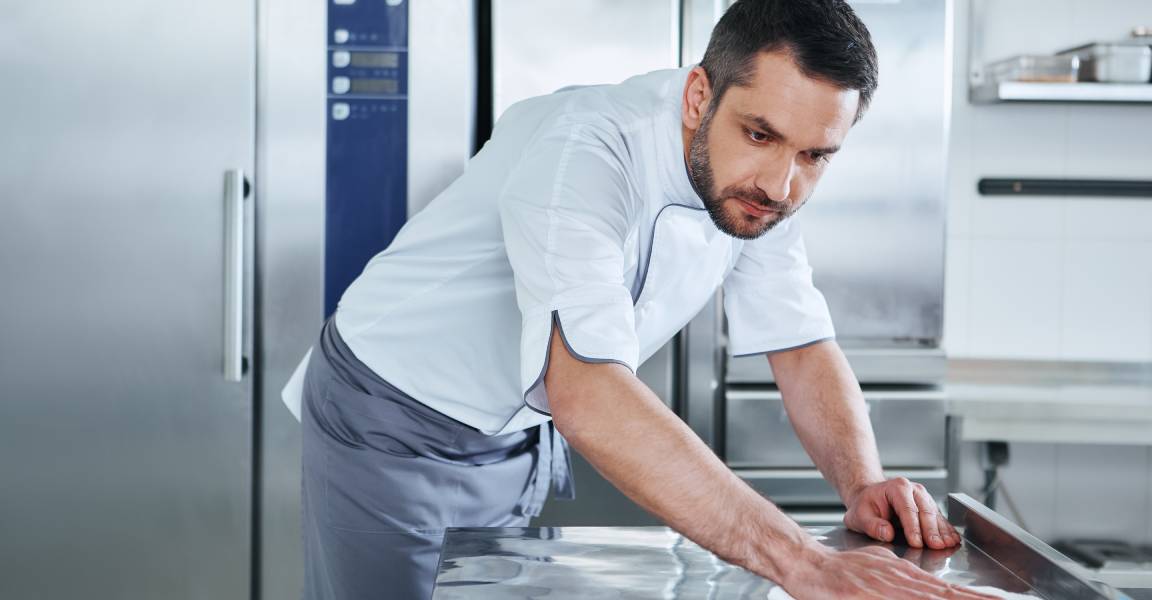[su_note note_color=”#ffe3e6″]This post contains affiliate links. Affiliate disclosure: As an Amazon Associate, we may earn commissions from qualifying purchases from Amazon.com and other Amazon websites.[/su_note]
The kitchen is often known as the heart of a restaurant. It’s where the alchemy of flavors and culinary delights come to life, but it’s also where an array of safety hazards can quickly dampen the experience. Safety, in any industry, is paramount, but for restaurateurs, it’s a non-negotiable aspect of successful operation. We’re peeling back the layers to uncover some of the most common safety challenges for restaurants and taking an exploration through keeping customers and staff out of harm’s way.
Ladle of Contents
Fire Hazards in Kitchen Environments
One of the most immediate and threatening dangers in a restaurant is the risk of fire. With the presence of open flames, hot equipment, and tight spaces, the kitchen is especially vulnerable to fire hazards.
Restaurant owners must maintain active suppression systems, regularly inspect and clean kitchen exhaust systems to prevent buildup and ensure all staff receives proper fire safety training. Fire-resistant materials, like steel, in kitchen construction can mitigate damage in the event of a fire, saving lives and livelihoods.
Slips, Trips, and Falls
An unattended spill or a trailing cable might seem innocuous, but in a bustling restaurant, these are the catalysts for a major safety issue. Slips, trips, and falls are among the most frequent causes of accidents in food service settings.
Restaurant managers can improve safety through effective housekeeping, handling spills immediately, and placing effective warning signage if a temporary hazard must wait. Employees should wear appropriate non-slip footwear, and the kitchen layout should provide clear, unobstructed paths.
Hygiene and Cross-Contamination Concerns
In the world of food safety, hygiene reigns supreme. Cross-contamination can lead to, at best, a sour stomach or, worse, a full-blown health crisis. Restaurants must rigorously implement and oversee hygiene practices that include thorough handwashing, regular sanitization of surfaces, and separation of raw and cooked foods. The Hose Safety Institute (HSI) outlines comprehensive hose safety principles for the food industry, which, when adhered to, can significantly reduce the risk of contamination via water sources used in food prep areas.
Sustaining a Culture of Safety
Ensuring a safe environment in the restaurant industry requires a commitment to maintaining best practices and instilling a culture of safety among the team. This involves continuous training, proper equipment maintenance, and an openness to learning from past incidents. By fostering an environment where safety is everyone’s responsibility, restaurant owners can rest assured their establishments are not only serving delicious meals but also upholding the highest standards of safety and well-being.
However, it’s also important for restaurateurs to realize when to seek professional advice, especially when navigating complex safety regulations and practices. The common safety challenges in restaurants might pose significant risks to staff and patrons, but with careful diligence, you can overcome all obstacles.



